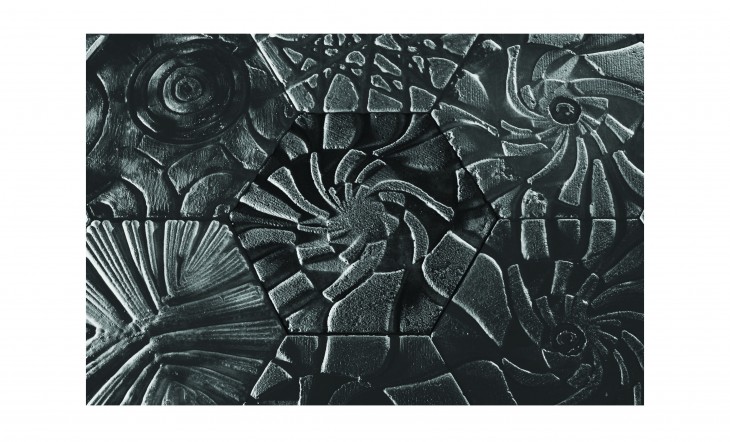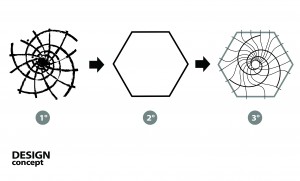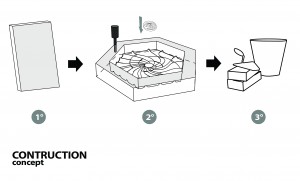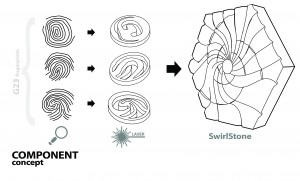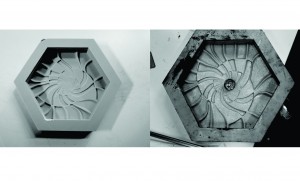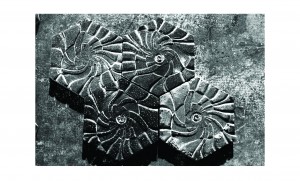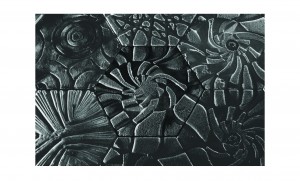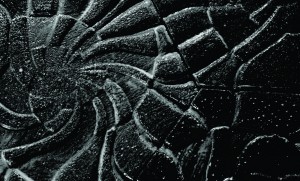The third and last Digital Fabrication assignment it’s done, our task was to revisit the famous Panot hexagonal cement floor tile designed by Gaudi in 1904 and generate our own design tile with new technologies like the CNC milling machine.
The task began with the development of the pattern as a three dimensional treatment of the top surface of the tile considering a height restriction, the channeling of water through the tile and the possible connection to our own or others tiles.
Our design was generated from two spirals, each in different direction, that meet in the center. This lines are then carefully projected to a cone that thanks to its slope water can be drained out. Also a special piece of wood is laser cut with the team’s fingerprints design to put it in the mold when casting to achieve an extra pattern.
Link to video!: https://vimeo.com/80948868
The design is submitted into RhinoCAM software in order to see the process and paths that the CNC milling machine takes to make the mold. Milling paths are made for the different tools used in the machine in order to achieve a smooth surface. Once the milling process is less than 2 hours the mold can be made.
When the mold is finished it’s covered with vaseline in order to pour the concrete for the casting, once the concrete is dry the tile is carefully taken out, cleaned and waxed in order to get a good finishing, this process was then repeated 5 more times. With the 6 tiles ready the assembly can finally be made in a collective manner.

